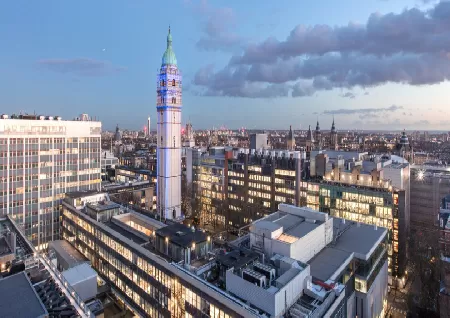Imperial College London

Imperial College London is a public university that was established in 1907. Previously a college of the University of London, the university became an autonomous entity in 2007. The science-focused institution has many campuses in and around London. The main campus is located in South Kensington, a Central London neighbourhood that also houses major cultural and educational organisations such as the Natural History Museum. Imperial has around 15,000 students, and tuition is higher for non-European Union students. Housing is provided for first-year students, with a limited number of rooms available for returning students. Graduate student accommodation is provided on-campus at the Silwood Park site, which is around 25 miles west of Central London.
The university is divided into four academic divisions: engineering, medical, natural sciences, and business. The academic year at Imperial is divided into three terms: fall, spring, and summer, with English as the predominant medium of teaching. The Data Science Institute, the Institute of Global Health Innovation, and the Centre for Hedge Fund Research are among the university's research centres and organisations.
Every year, the university's Undergraduate Research Opportunity Programme provides around 400 students with hands-on research opportunities. The International Research Opportunities Programme at Imperial sends undergraduates to partner universities around the world, such as the Massachusetts Institute of Technology in the United States and Seoul National University in South Korea, to conduct research for at least eight weeks during the summer break. Imperial has a long history of scientific trailblazers, including Alexander Fleming, who developed penicillin in 1945, an antibiotic that is currently widely used to treat bacterial infections.
Imperial College London is ranked #20 in Best Global Universities and ranked #6 in QS World University Rankings.
Related queries to this article
- Imperial College London
- Global Universities
- QS World University Rankings
Read more articles and stories on InstaSity Education.





